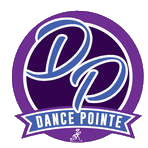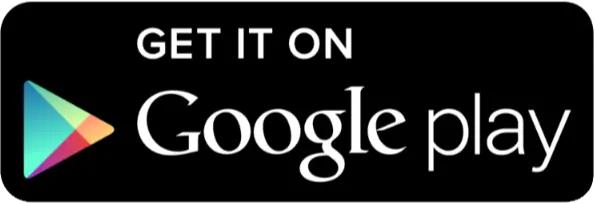We build character, inspire confidence and joy through dance, theatre and music and we would love to show you how.
At all times, the performing arts are a powerful tool for helping students of all ages build confidence, positive body image and amazing mental and physical strength. We love the way our practice builds creativity, keeps us engaged in life and gives us the opportunity to share our passion with others. We build on that love with the focus on developing leadership skills that will allow our students to get the most out of their training.
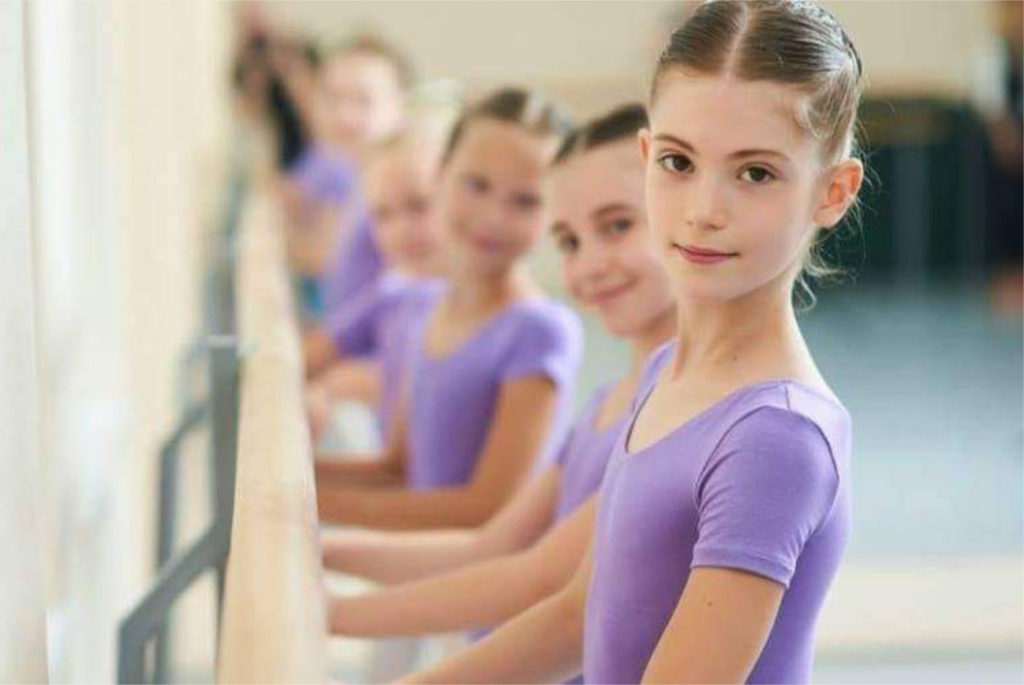
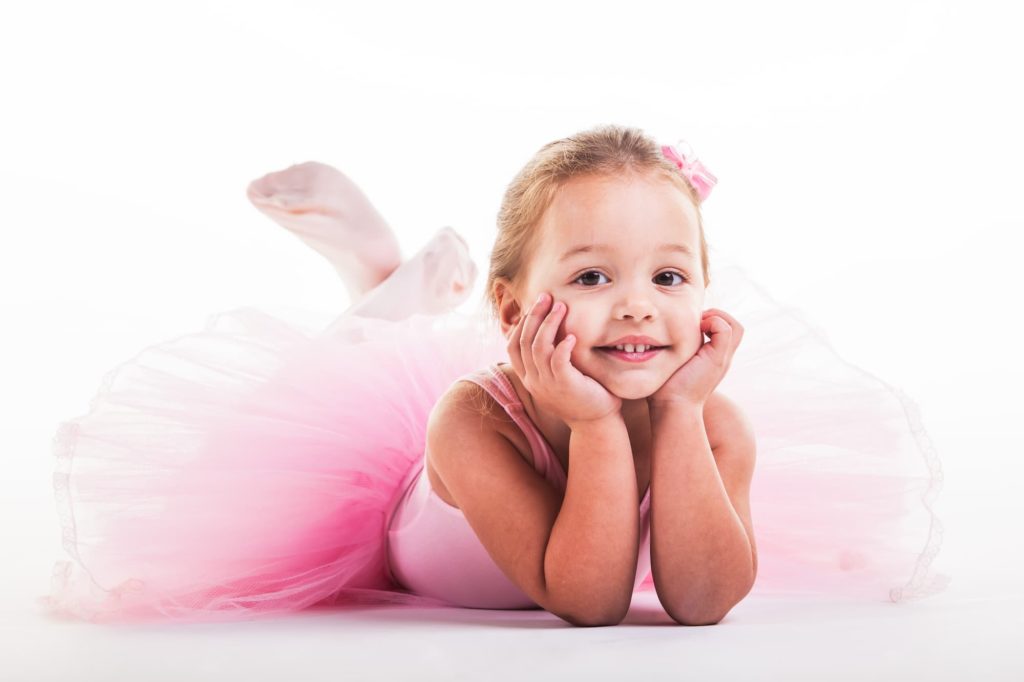
Twinkle Babies Dance – Ages 2-3 A forty-five minute introductory dance class containing ballet, tap and creative movement. Young dancers will learn the basic steps while learning how to follow direction and imitate movement in a positive environment. Engaging music is used to get these little ones inspired to dance. The use of props such as Twinkle bears and hula hoops, enables little ones to use their imagination, creativity and most of all have fun!
By the end of the season students can dance set work independent of the teacher, memorize simple exercises and sequences and make start of dance/musical interpretation to perform on stage at our annual recitals.

Twinkle Stars Dance – Level I Ages 3.5-4, Level II 5-6 An age specific 45 minute class containing ballet, tap and jazz/creative movement. The purpose of the class is to introduce young dancers to three styles of dance and inspire movement and creativity within a positive environment. Students will also learn basic steps and terminology in all three styles. For example, all dancers will learn what a “plie” is and how to demonstrate one. The use of fun and age appropriate music engages students’ minds and bodies. The use of props such as hula hoops for the “freeze dance” makes the end of class the most fun! Placement Notes: Twinkle Star Dance™ 3-4 students must be at least 3 1/2 years old.
By the end of the season students can dance set work independent of the teacher, memorize simple exercises and sequences and make start of dance/musical interpretation to perform on stage at our annual recitals.
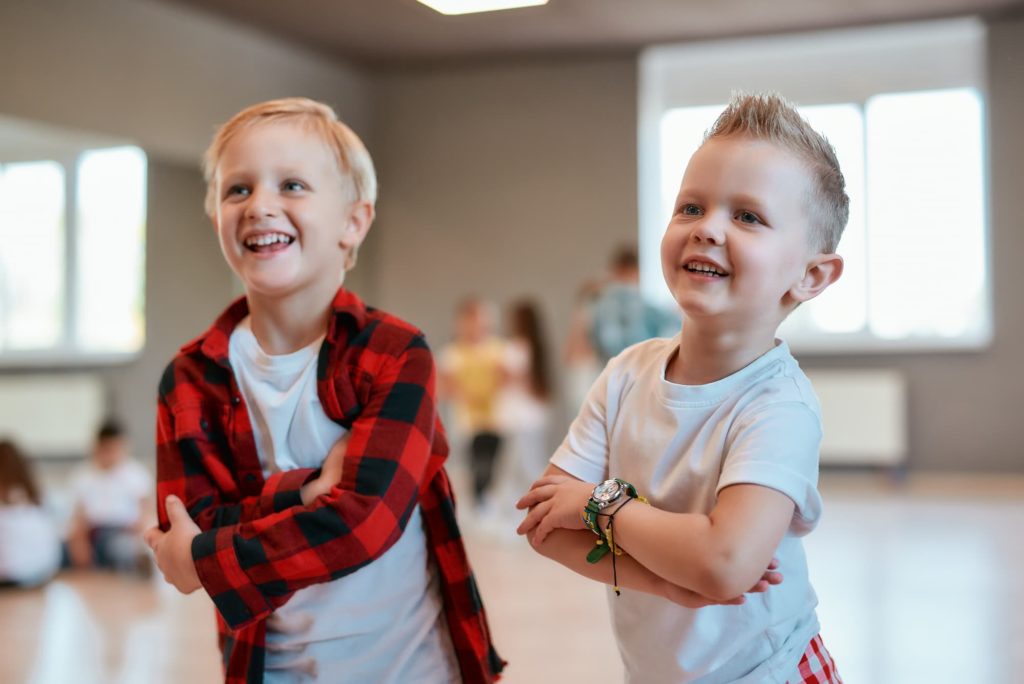
Level I Ages 5-8, Level II Ages 8-10, Level III Ages 11+: Our Jr. and Sr. Hip Hop class is a forty-five minute to one hour class that is a fast, high energy type of dance that promotes exercise, coordination, flexibility, balance, floor work, jumps and turns incorporating street dance and jazz to contemporary and popular music.
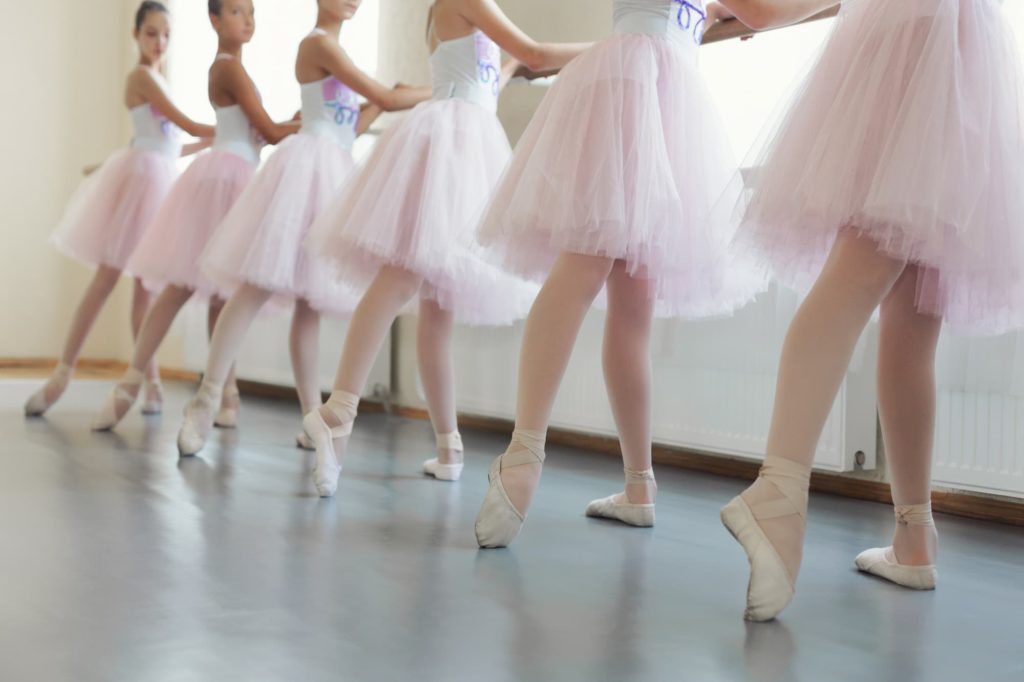
Ages 7-9 who have completed Level II: Jr. Ballet Stars – Designed for dance students in their 3rd, 4th and 5th year of training and includes barre technique and balance, flexibility, strength, center floor exercises incorporating the terms of classic ballet technique and positions, body placement, arm and leg coordination, poise, progression jumps and turns. Building on the foundation set by Basic Ballet, barre work exercises become more complex and of a longer duration to train muscle memory and increase flexibility. Special emphasis is placed on the dancer’s ability to connect and link steps for fluid movement, memorize patterns, and move through space while maintaining proper alignment. At this level we encourage the dancer to examine the combinations and plan ahead for self-correction. This level is typically repeated.
Level IV – Ages 10-12 who have completed Level III: Designed for dance students in their 5th through 6th year of training and includes barre technique and balance, flexibility, strength, center floor exercises incorporating the terms of classic ballet technique and positions, body placement, arm and leg coordination, poise, progression jumps and turns. At this level there is a marked developmental leap, both in the technical aspects of class and in the seriousness with which training is taken by the dancer. This is the age when the young dancer begins to evaluate past experience in dance, and to question whether or not a career would be desirable. Training intensifies to match this period of self-evaluation. All past work is repeated in more complex combinations increasing strength, endurance, stamina and ability to link steps together in a fluid manner. Understanding of motivation, movement goals, imagery and presentation are stressed in order to develop better artistic expression. Pre- pointe is introduced at this level. This level is typically repeated. Evaluation for full pointe work is conducted at the end of the 2nd year.
Levels V, VI, VII – Ages 13+ who have completed Level IV: Our intermediate/advance ballet program designed for teen through adult dance students includes barre technique, stretch, leg extensions (devlopés, fondu and petite/grand battements), balance, flexibility, strength, center floor exercises the terms of classic ballet technique and positions; body placement; poise; step and technique retention; progression jumps and turns; understanding choreography, style and performance. From this level forward the plasticity, coordination and smooth connection of movements of the arms, legs, feet, head and body is the primary developmental goal. Rhythmic patterns are emphasized and attention is given to aiding the dancer’s ability to “tune in” to muscular feelings. Emphasis is placed on greater stability and complexity in study of adagio and developing the smooth, graceful and subtle qualities in movement. Study of turning in open positions is part of daily routine at this level, as is the study of battu, petite allegro and grand allegro. Regular and repeated reference will be made to facilitate the dancer’s understanding of movement goals and ability to “self correct”.
Pointe – Beginner and Intermediate/Advance. The dream of every young ballet student is to dance on Pointe. Proper care must be given to early technique training in order to fully prepare a student for the strength needed to dance “en pointe.” Most students around age 11 or 12 in their 4th to 6th year of ballet training are physically prepared for the new challenge. However, it is the decision of the schools director based upon the student’s experience and strength. First year Pointe students will use the barre to develop more strength and confidence before being introduced to center floor work. Pointe classes are offered separately from regular ballet technique classes in order to safely build the strength required for full pointe work. Pointe Levels may be repeated based on the specific needs of each dancer, and advanced dancers are encouraged to wear their pointe shoes in all technique classes. Students who take Pointe must also take two Ballet classes.

Level II Ages 8-10, Level III 11+: Some ballet technique and training is suggested. Jazz is a structured style of dance and is seen in many Broadway shows. Our Jazz program starts with a warm-up that incorporates stretching and isolations. Students learn jazz technique, terms, combinations, jumps and turns as well as an introduction to different Jazz styles including lyrical, theatre (Fosse), and pop. Jazz combines many styles and techniques from ethnic and contemporary dance, to ballet. rhythm, upon which all dance forms depend, is particularly integral to jazz dance. The first half of class consists of exercises which stretch and tone muscles and develop support for proper stress-free alignment of the skeletal structure. Using jazz, soul, R&B, ethnic and pop music, jazz classes are a great work-out and a fun way to release tension while attaining a body awareness that can be applied to everyday activities.

Level II, III Ages 8+: Our Jr. and Sr. Lyrical program incorporates a dance style that combines elements of ballet, modern and Jazz techniques. It is commonly set to popular music with vocals or just instrumental bars. This type of dance uses musical interpretation to inspire movement and show expression. Contemporary dance is a style that typically deals with the abstract in both form and content. Unlike other more structured forms of dance the movements are generally intended to be performed with a released or relaxed quality. In addition, it draws influences from many different dance styles and cultures such as, African jazz, jazz music, ballet, and eastern dance styles to name a few. Contemporary dance also follows closely on the heels of the modern dance movement which was brought forth through pioneers such as Isadora Duncan, Martha Graham, Merce Cunningham, Jose Limon, and Lester Horton who all developed their own unique style and techniques that many still practice today. The goal of a lyrical/contemporary dancer is to use gesture, facial expression, and controlled movements in order to execute their movements and emotions fully. Besides emotional connection to music, lyrical dance typically encourages use of articulation, line, weight, and movement qualities found in the core of ballet training.

Level III Ages 8-10, Level IV Ages 11+: Our Jr. and Sr. tap program broadens a student’s technique spectrum of coordination introducing a Broadway style which includes terms, sequential step and turn combinations for level progression. Tap is an exciting rhythmic exercise and dance form which is enjoyable to both kids and adults. Rooted in African-American History, tap offers a variety of styles and techniques. Students will realize results in dance movement after a minimum number of classes. The classes stress the basics of tap and allows dancers to build into combinations which are great to watch and delightful to hear. Try tap for fun and fitness.

Level III Ages 8-10, Level IV Ages 11+: Our Jr. and Sr. tap program broadens a student’s technique spectrum of coordination introducing a Broadway style which includes terms, sequential step and turn combinations for level progression. Tap is an exciting rhythmic exercise and dance form which is enjoyable to both kids and adults. Rooted in African-American History, tap offers a variety of styles and techniques. Students will realize results in dance movement after a minimum number of classes. The classes stress the basics of tap and allows dancers to build into combinations which are great to watch and delightful to hear. Try tap for fun and fitness.
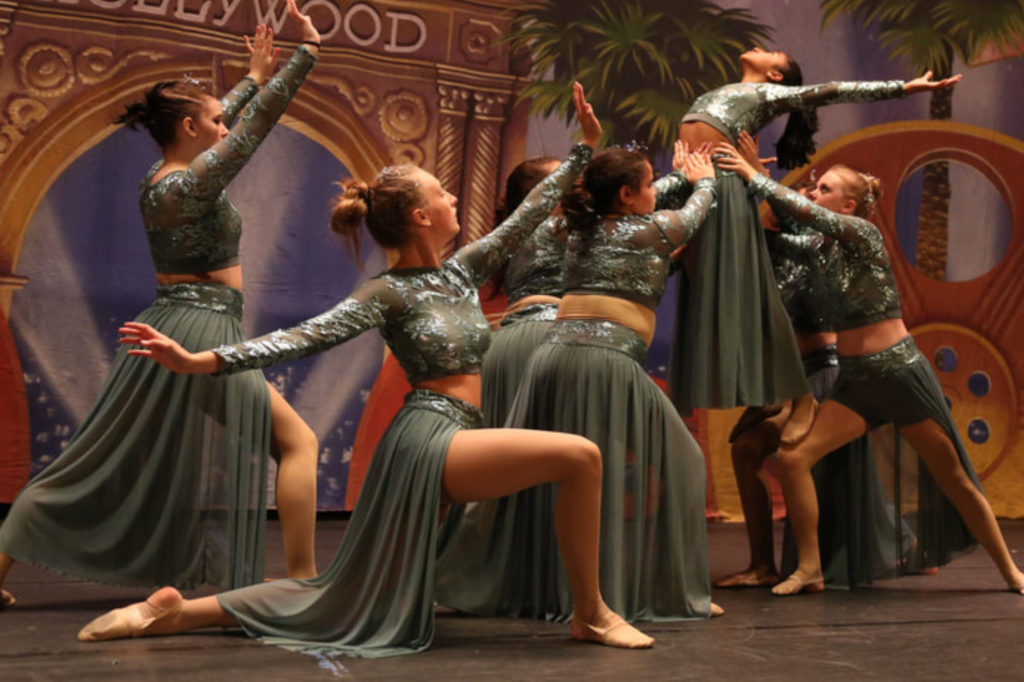
Level II, III Ages 8+: Our Jr. and Sr. Lyrical program incorporates a dance style that combines elements of ballet, modern and Jazz techniques. It is commonly set to popular music with vocals or just instrumental bars. This type of dance uses musical interpretation to inspire movement and show expression. Contemporary dance is a style that typically deals with the abstract in both form and content. Unlike other more structured forms of dance the movements are generally intended to be performed with a released or relaxed quality. In addition, it draws influences from many different dance styles and cultures such as, African jazz, jazz music, ballet, and eastern dance styles to name a few. Contemporary dance also follows closely on the heels of the modern dance movement which was brought forth through pioneers such as Isadora Duncan, Martha Graham, Merce Cunningham, Jose Limon, and Lester Horton who all developed their own unique style and techniques that many still practice today. The goal of a lyrical/contemporary dancer is to use gesture, facial expression, and controlled movements in order to execute their movements and emotions fully. Besides emotional connection to music, lyrical dance typically encourages use of articulation, line, weight, and movement qualities found in the core of ballet training.
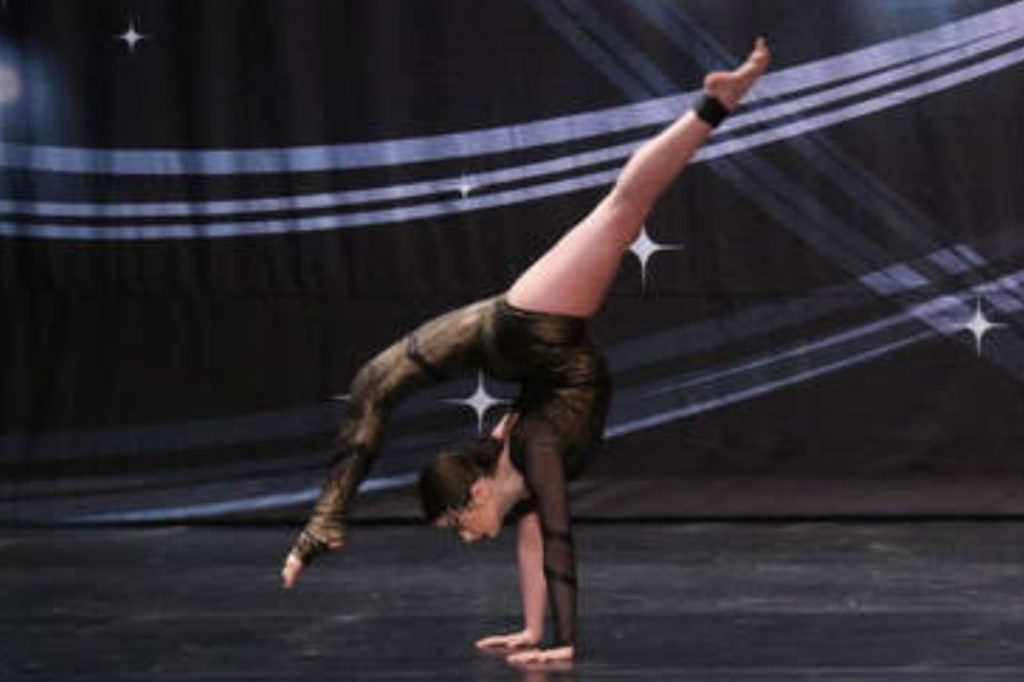
Mini Gymnastics Level I Age 5-9: Our Gymnastics program uses ballet technique for proper feet and body placement as students begin with basic stretches onto pencil rolls, forward rolls, baby crab walks, and back rolls. They then advance to push-up back bends, lying
on their abdomens and touching their feet to the back of their head, and working on the concept of a cartwheel, fun activities such as playing hopscotch, step hop arabesque, and small split leap jumps.
Gymnastics Level II Ages 8-10, Level III Ages 11+: Also including Ballet/Lyrical and Jazz movements, students begin with basic stretches onto pencil rolls, forward rolls, baby crab walks, and back rolls. Students advance to headstands, handstands, and back bends from standing to floor and up again. Students progress to one-handed cartwheels, round offs, front limbers, and back walkovers introducing running tricks such as running cartwheels, round offs, and front handsprings. As they advance to walkovers of all kinds, Arabian limbers (any trick that takes off from two feet and passes through a handstand; variations include tuck front, pike front, straddle front, and back Arabian), spotting cartwheels, cartwheel drop splits, elbow stands, shoulder stands, hand walks, simple double tricks (like double cartwheels), and back handsprings. Advance introduction of full reverse walkovers (forward and backward) half reverse tensica, castovers, double back walkovers, triple cartwheels, aerial walkovers holding hands, and so forth.

Train with a University-trained local SUNY teachers and performers with Chamber Orchestra, Sound Symphony and various musicals, rock bands, wind ensembles, jazz combos, the Stony Brook Baroque Ensemble, and other chamber groups of various sizes.
Vocal Instruction: Includes music theory, sight singing, NYSSMA Preparation, Audition and Performance Techniques in all styles/genres.
Musical Instruments: Instruction in pop, jazz, classical to modern including NYSSMA preparation in Woodwinds, Brass and Strings to include Oboe, Flute, Clarinet, Alto, Tenor, Saxophone, French Horn, Trumpet, Baritone Horn, Trombone, Guitar, Percussion, Violin, Viola, Cello, Bass and Piano.
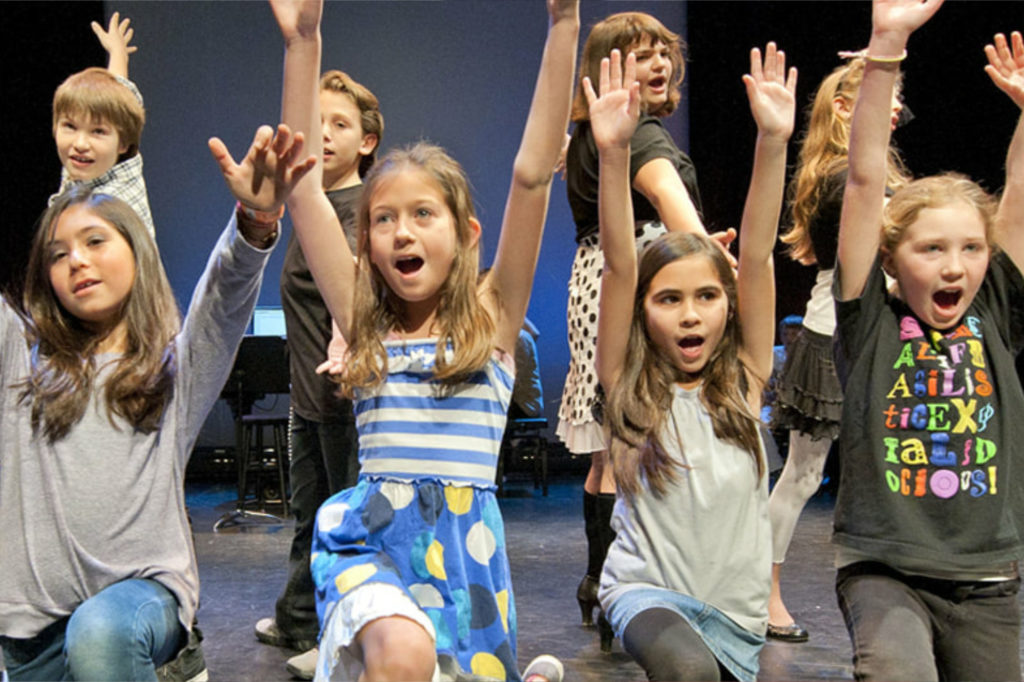
Make A Scene and Learn How to Get the Acting Roles You Want. Designed for aspiring actors and actresses to explore theatre from a musical aspect as performers. This is achieved through studying and performing various theatre pieces of different genre, as well as training with a University-trained, professional actor/teacher with a wide range of experience in stage performance. Performing scenes of all different genre in a fun supportive environment learning the fundamentals of theatre.
Skills Taught: Vocal Projection; Stage Presence; Memorization Skills; Audition Techniques; Improvisation; Clarity of speech and Imagination Development; Voice Technique; Intro to Music Reading; Basic Dance Skills; Stage Presence; Auditioning Techniques; and Projection. Students gain the ability to interpret drama skits, and employ dialects, accents and body language, observation and emulation, mime, and stage direction. Students become comfortable and collective on stage, achieve and obtain performance skills, as well as the understanding of the theatre arts and atmosphere. This is a high energy fast pace class in a fun supportive environment for young performers to learn the fundamentals theatre. Each season students are prepared to perform two shows in our annual performances.
We are so happy here.
This is Gina’s first year at Dance Pointe and we are so happy here. She has gained so much confidence already! Her first time on stage was for the holiday show and what a wonderful surprise it was. All of the students did a great job and the costumes and sets were beautiful. I really enjoy bringing Gina to class each week and watching the children progress in all areas. Her teachers are wonderful and patient. Jenn is always welcoming and keeps everyone in the loop with emails about all upcoming events and news! Most of all, I love seeing how my daughter beams with pride now! Thank you Dance Pointe
– Denise Nappi, Proud Mom
This is a great place for your kids.
I’m a single parent and we were looking for a place with musical theatre, drama and dance. So we signed up here, and at first I put my kids in drama for the fall and they loved it, especially my daughter. So in the spring I put my kids in drama and musical theatre and my daughter in lyrical dance. We’re a big happy family and they are starting their second year. This is a great place for your kids if they like singing, dancing, and especially if they love to have fun! I recommend this place because my kids love the teachers. Last, Ms. Jennifer the director is kind, friendly, organized and especially considerate to the needs of the children and parents.
– Gary Maini, Proud Dad
Introductory Offer for New Students
Our new student intro program includes two weeks of group classes, free dance uniform and shoes.

